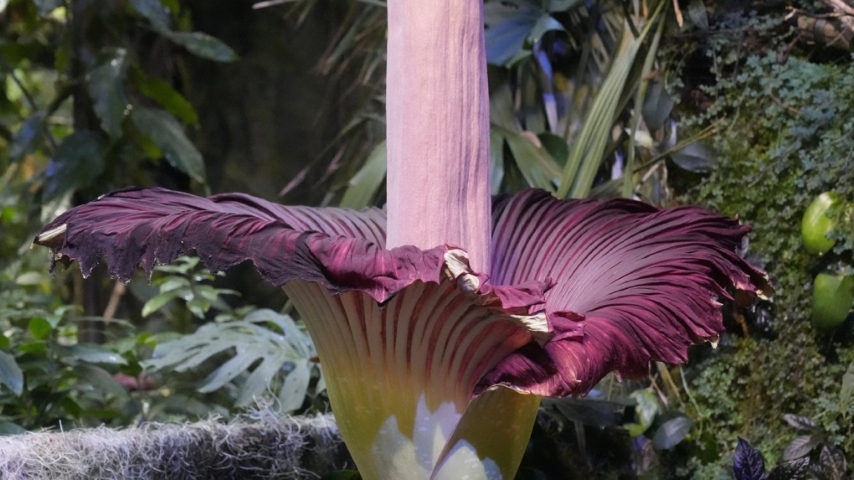
On Wednesday, February 28, 2024, a blooming corpse flower was on display at the California Academy of Sciences' Osher Rainforest in San Francisco. This rare occurrence drew attention as visitors marvelled at the sight of the unusual and fascinating plant. The captivating moment was captured in a photo by Jeff Chiu.
In the heart of San Francisco, a captivating spectacle unfolded, drawing crowds eager to witness a rare and intriguing natural phenomenon. On Wednesday, anticipation hung in the air as people lined up outside the California Academy of Sciences, awaiting the unveiling of a botanical marvel – an Amorphophallus titanum, affectionately known as the corpse flower.
This peculiar plant, shrouded in mystique, has garnered attention for its sporadic blooming cycle, which occurs only once every seven to ten years. As the clock ticked, nature enthusiasts and curious onlookers alike braced themselves for an olfactory adventure, for when this enigmatic flower unfurls its petals, it releases a fragrance that can only be described as both peculiar and pungent.
"It's kind of imitating the smell of kind of dead carcass to kind of get all the flies to come and interact with it, pick up pollen, and then take that pollen to another flower that it might investigate due to its smell," explained Lauren Greig, a horticulturist at the California Academy of Sciences, shedding light on the flower's evolutionary strategy.
Named Mirage, this particular corpse flower embarked on its maiden bloom, a momentous occasion marking its debut since being donated to the museum in 2017. Nestled within the rainforest exhibit since 2020, Mirage captivated visitors with its exotic allure and captivating aroma, transporting them to the verdant landscapes of its native habitat – the Indonesian island of Sumatra.
However, beyond the allure of its captivating bloom lies a sobering truth – the Amorphophallus titanum teeters on the brink of extinction. Classified as endangered by the International Union for Conservation of Nature, fewer than 1,000 of these majestic plants remain in the wild, underscoring the urgency of conservation efforts to safeguard their future.
As the sun set on San Francisco, the crowds dispersed, leaving behind memories of an unforgettable encounter with nature's marvel. Yet, as Mirage's petals closed once more, one couldn't help but ponder the fragility of life and the profound beauty found in the most unexpected corners of our world.















